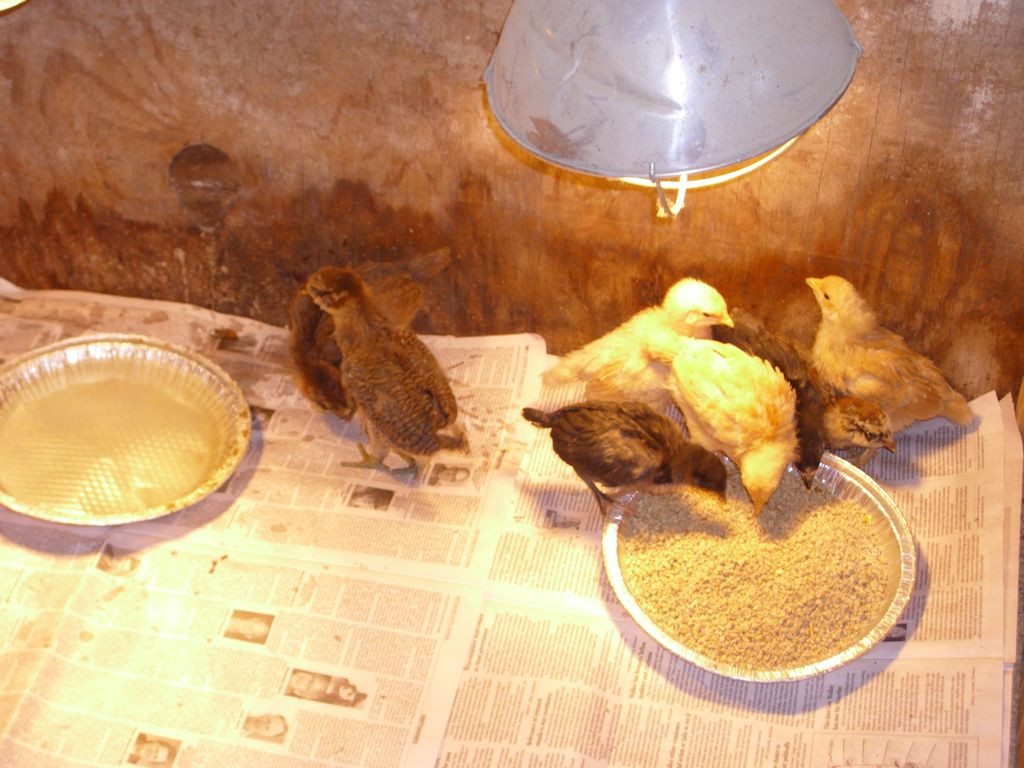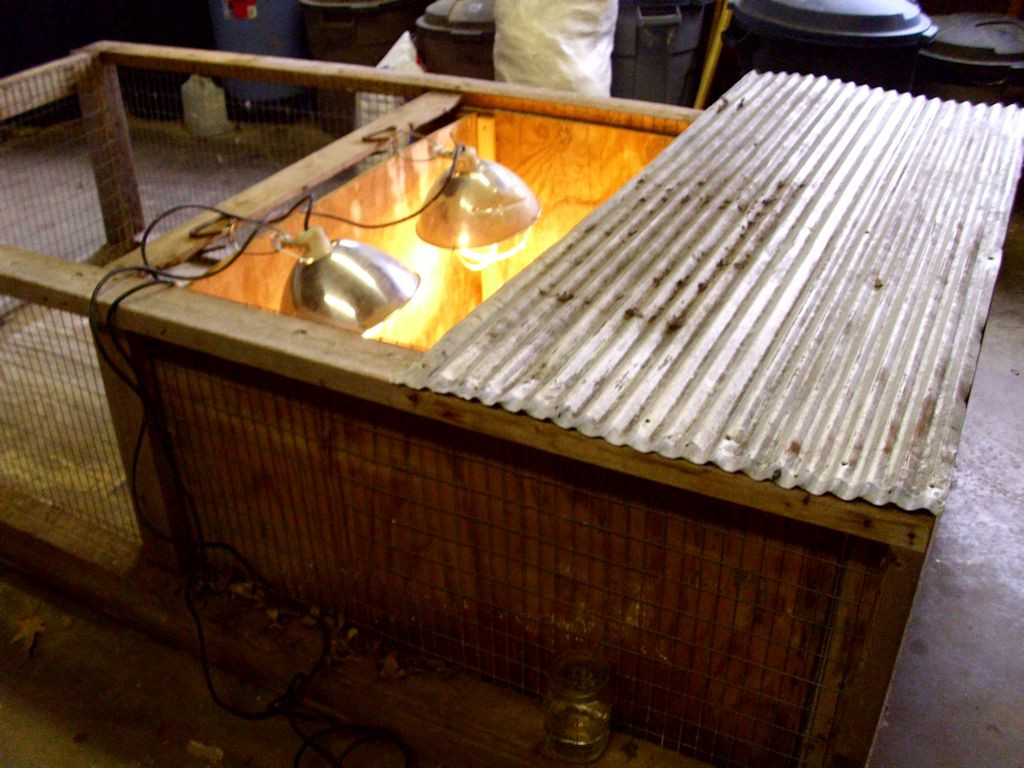A lot of people are interested in hearing about the continuing saga of my chicks. Last week’s post, A Chick Update, talked about how the chicks are growing feathers and the ways in which layers differ from meat chickens. Of course, chickens are chickens. Layers and meat chickens alike have a certain life cycle. When you first start them out in the brooder box, you leave the heat lamps on 24 hours a day and make food available all the time. However, at some point you need to start changing things or the chicks will never develop properly.

This past week I started turning the heat lamp off during the day. The chicks started sleeping more as a result. I also started withdrawing food during the evening hours. The chicks now have food available from around 5:00 am to 7:00 pm. If I were to make food available all the time, the chicks could overeat and literally die of heart failure. Laying hens have more restraint than meat chickens, so I started withdrawing the food a little later. When working with meat chickens, I start withdrawing food in the evenings by the third or fourth day. Otherwise, you have to start dealing with a condition known as flip, as in, the chicks flip over on their backs, dead. The point is to control food to keep the chicks healthy and also to start getting them into a more natural pattern of living.
Interestingly enough, the chicks can already fly short distances. At least, they can jump from my hand and make a controlled landing back into the brooder box. I had a chick surprise me by doing it this past week. She’s just fine, but I’m paying a lot closer attention now when I pick them up. The lesson is that you do need to pay close attention when handling the birds to ensure they don’t get hurt.
The chicks are still eating chick starter. All chick starter provides your chicks with a high protein feed that’s easy to digest. Some chick starter provides medication to help the chicks avoid getting sick from diseases such as coccidiosis and I highly recommend getting such food because you can find this particular disease in most areas of the world (and definitely anywhere that has seen use for raising poultry in the past). A few chick starters include ingredients to help improve overall chick health, such as improving skin quality so that the chicks do better once you get them outside. A high quality chick starter is most definitely going to cost more than a lower quality product, but using a high quality product also ensures your chicks grow faster, have a higher probability of living until they’re fully grown, and do better once you start getting them outside. You really do want the perky chicks that a good food can provide.
I’ll keep posting updates as long as I continue to receive e-mail from interested parties. Let me know your chick-related question at [email protected].


